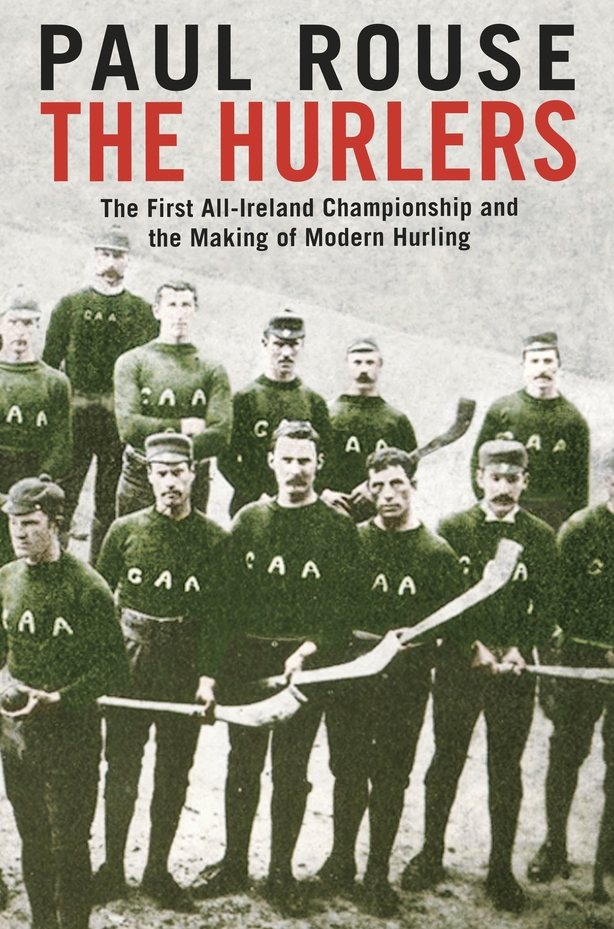We're delighted to present an extract from The Hurlers: The First All-Ireland Championship and the Making of Modern Hurling by Paul Rouse.
In 1882, a letter was published in the Irish Times, lamenting the decline of hurling. The game was now played only in a few isolated rural pockets, and according to no fixed set of rules. It would have been absurd to imagine that, within five years, an all-Ireland hurling championship would be underway, under the auspices of a powerful national organization.
The Hurlers is an account of that dramatic turn of events, of the colourful men who made it happen, and of the political intrigues and violent rows that marked the early years of the GAA.
Easter Sunday, 1 April 1888
Forty-two men stand in military formation on the roadway outside William Cunningham’s hotel in the middle of Birr, a small town in the south of King’s County. It is a cold, fine afternoon. At the head of the formation stand three Fenians, members of the Irish Republican Brotherhood: a revolutionary society dedicated to the overthrow of British rule and the establishment of an Irish republic. The one giving the orders is James Lynam, said to be a veteran of the American Civil War; he is now one of the chief Fenian organizers in Galway. The others are Andrew Callanan and Hugh Ryan, who regularly feature in Special Branch reports of subversive activity across Co. Tipperary. All three were in Hayes’ Hotel, in Thurles, five months ago, when one of their colleagues fired a shot in over the head of Michael Cusack, the founder of the Gaelic Athletic Association. They were also involved when the following day’s GAA annual convention descended into a brawl between Republicans and priests.
The forty- two men arrayed behind Lynam, Callanan and Ryan are hurlers. They represent the two clubs – Meelick, from East Galway, and Thurles, from Co. Tipperary – that have come to Birr to play in the first- ever All- Ireland hurling final. They stand in parallel lines in front of the hotel. The Thurles men are carrying their hurleys upright against their shoulders like long rifles. Their jerseys are green, with a little galaxy of stars around the centre. The Meelick men are also wearing green jerseys, but with a large white stripe running across the middle; and on their heads are green knitted caps with tassels. The hurlers still have on their everyday boots, though these will later mostly be discarded: many of the players will compete barefooted.
With everyone in position, James Lynam calls them to attention and shouts: ‘Right, about.’ The hurlers turn as one and march shoulder to shoulder through the streets of Birr. It has quickly become a tradition that, when a big hurling match is played in a town, the parade of hurlers is led by a local band, to draw people to the match and to create a sense of pageant. But not on this day. The Frankford Brass Band, which regularly plays music at the hurling matches in Birr, is out at a huge demonstration at nearby Broughal Castle, where 2,000 people are protesting against the eviction of a farmer, Rody Dooly. The Irish countryside continues to be convulsed by waves of boycotting, evictions and murder. In the heartlands of hurling, this ‘Land War’ between landlords and their impoverished tenantry is waged fiercely. The Thurles and Meelick teams both include men who will, in the coming years, be evicted from their farms.
To the cheering of the townspeople, the hurlers parade through the streets towards the hurling field, off Railway Road on the edge of town. The field, measuring 100 yards wide by 200 yards long, is level and not too grassy. It has already been used for local championship matches and has drawn general approval from players and spectators.
Around 3,000 people wait in the field for the hurlers. Hawkers sell their wares, and tricks- o’- the- loop do a roaring trade while other men try to entice spectators to gamble on which of three thimbles covers the pea. Among the crowd are off- duty members of a British army regiment, the Scottish Highlanders, who are stationed in nearby Crinkle barracks and who regularly attend hurling matches around Birr. Some of the spectators have travelled with the teams from Thurles and from Meelick; many more have come by train, by horse and cart, by bicycle and on foot from all across North Tipperary, King’s County, Queen’s County and Galway, even though they are not associated with either team. They have come to the final for the love of hurling and for the day out. Some will enjoy the day too well and end up in court charged with drunkenness.
Waiting in the centre of the field is the referee, Patrick White, a native of Toomevara, Co. Tipperary, who lives and works as a butcher in Birr. White initially declined the job of refereeing on account of his links with Tipperary, but was eventually persuaded that his impartiality was beyond dispute.
At 3 p.m. he calls the hurlers to the middle of the field and, for the second time that day, the two teams line up alongside one another. They lower the blades of their hurleys to the ground and set themselves to play. White takes the red leather ball into his hand and throws it in between the hurlers. Amid the jostling shoulders and swinging timber, the first All-Ireland hurling final is under way.

The Hurlers: The First All-Ireland Championship and the Making of Modern Hurling by Paul Rouse is published by Penguin Ireland, and is in bookshops now.

